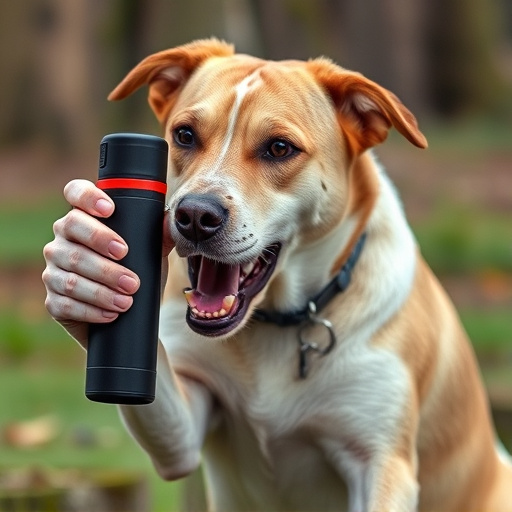Dog pepper spray in a car should be stored between 50°F – 80°F (10°C – 27°C) and protected from direct light to maximize its 2-3 year shelf life. Regular checks for expiration, proper sealing after use, and cool, dry storage locations are essential for maintaining its effectiveness. Keep it accessible in your vehicle for emergency situations.
“Staying prepared for unexpected encounters while driving with your pet is vital. Dog pepper spray, a unique self-defense tool, can deter aggressive dogs and ensure your safety on the road. This article delves into the intricacies of dog pepper spray defense, focusing on its components, effectiveness, and how environmental factors impact its shelf life in your car. We’ll also provide essential maintenance tips to help you maximize its lifespan. Understanding these key aspects is crucial for ensuring a reliable and effective defense.”
- Understanding Dog Pepper Spray: Components and Effectiveness
- Factors Affecting Pepper Spray Shelf Life in Your Car
- Maintenance Tips to Maximize Your Dog Pepper Spray's Lifespan
Understanding Dog Pepper Spray: Components and Effectiveness
Dog pepper spray is a non-lethal self-defense tool designed to temporarily incapacitate an aggressor, providing time for escape or assistance. It typically consists of capsaicin, the active ingredient found in chili peppers, suspended in a liquid carrier. This potent compound irritates the eyes and respiratory system, leading to temporary blindness, coughing, and difficulty breathing. The spray’s effectiveness can be influenced by factors such as distance, wind, and the aggressor’s tolerance to pain.
When considering dog pepper spray for personal safety, it’s crucial to be aware of its shelf life, especially if you plan to keep it in your car. Pepper spray generally has a shelf life of 2-3 years when stored properly, away from direct sunlight and extreme temperatures. Regularly checking the expiration date is essential to ensure its potency remains effective when you need it most. Additionally, storing it in an easily accessible location within your vehicle can make all the difference during an unexpected encounter.
Factors Affecting Pepper Spray Shelf Life in Your Car
The pepper spray shelf life in your car is influenced by several key factors, each playing a crucial role in maintaining its effectiveness. One of the primary considerations is temperature. Extreme heat or cold can significantly impact the chemical composition of pepper spray, leading to reduced potency over time. It’s essential to store your pepper spray in a temperature-controlled environment within your vehicle, ideally between 50°F and 80°F (10°C to 27°C).
Another critical factor is exposure to light. Prolonged exposure to sunlight or other bright lights can break down the active ingredients in pepper spray. Store your spray in an opaque container, preferably in a dark compartment of your car, like under the seat, to protect it from direct light, ensuring its potency remains intact for longer periods.
Maintenance Tips to Maximize Your Dog Pepper Spray's Lifespan
Regular maintenance is key to ensuring your dog pepper spray stays effective and extends its lifespan, especially if it’s stored in your car. Start by keeping the spray in a cool, dry place; extreme temperatures can degrade its potency. Avoid exposing it to direct sunlight or heat sources, which could accelerate the decay process. Additionally, ensure the container is tightly sealed after each use to prevent any moisture ingress, as this can compromise its performance.
Periodically check the expiration date and replace the spray if it’s reached its peak shelf life, typically around 2-3 years from the manufacture date. Storing it in a designated, secure area within your vehicle ensures easy access during emergencies while maintaining its integrity.
Dog pepper spray can be a valuable tool for personal safety, but understanding its shelf life and proper maintenance is crucial. By keeping your dog pepper spray in a cool, dry place and regularly inspecting it, you can ensure its effectiveness when you need it most. Remember, knowing the components and how to maximize its lifespan can make all the difference in unexpected situations. Stay prepared and stay safe!
